- Home
- J. T. Edson
Is-A-Man (A J.T. Edson Standalone Western)
Is-A-Man (A J.T. Edson Standalone Western) Read online
The Home of Great Western Fiction!
Although she was born Annie Singing Bear, the Great Spirit of the Comanche ordained that she should be reared as a fully trained warrior, and should be called, ‘Should-Be-A-Boy’.
But before she could attain the status of tehnap, the Pahuraix signed a peace treaty and it seemed that Annie would never become the brave she wanted to be.
Then a girl of her village was raped by drunken Mexicans. Honor demanded that she be avenged, but the treaty must not be broken. The Elders must speak truly when they vowed no man had taken revenge. And so Annie Singing Bear became a warrior of the Comanche nation.
IS-A-MAN
By J. T. Edson
First published by Transworld Publishers Ltd in 1985
Copyright © 1985, 2016 by J. T. Edson
First Smashwords Edition: December 2016
Names, characters and incidents in this book are fictional, and any resemblance to actual events, locales, organizations, or persons living or dead is purely coincidental.
All rights reserved. No part of this book may be reproduced or transmitted in any form or by any means, electronic or mechanical, including photocopying, recording or by any information or storage and retrieval system, without the written permission of the author, except where permitted by law.
This is a Piccadilly Publishing Book
Series Editor: Ben Bridges
Text © Piccadilly Publishing
Published by Arrangement with the Author’s Agent.
For Julie and Colin Robins of Fisher-Robins Photonews and our ’spiritual home’, with thanks
Author’s Note
To save our ‘old hands’ from repetition, but for the benefit of new readers, we have included in the form of an Appendix various Western terms which we have received frequent requests to be clarified and an explanation of certain Comanche words. The spelling of the latter is phonetic.
We realize that, in our present ‘permissive’ society, we could use the actual profanities employed by various people in the narrative. However, we do not concede that a spurious desire to create ‘realism’ is any excuse for doing so.
Lastly, we refuse to pander to the current ‘trendy’ use of the metric system. Except when referring to the caliber of certain weapons traditionally measured in millimeters—i.e. Walther P-38, 9 mm—we will continue to employ miles, yards, feet, inches, stones, pounds and ounces, when quoting distances or weights.
J.T.EDSON
Prologue
To an observer experienced in such matters, although someone uninitiated might have been misled, the clothing and accoutrements of the rider who was bringing a fourteen hand blue roan gelding to a halt within the walls of a dried up water course that made its descent through a cliff on to more open land in North-West Texas, were those of a young and probably not yet fully trained Comanche warrior.
Dismounting on the right side, as was the habit of all North American Indians, brought more clearly into view the most important indication of the nation to which the rider belonged. Being considered indispensable by every Nemenuh brave-heart regardless of age or social status, i this was the breechclout. Made from a broad piece of cloth of the traditional blue color, it was drawn up between the legs and passed under a belt around the waist so the ends, one in front and the other behind, extended almost to knee level. ii
Instead of the rider wearing trousers, attached by straps to the waist belt, close fitting buckskin ‘leggins’ offered protection to the lower limbs and reached from hip to foot. Beyond the seam, the border of the material was left loose and presented a wide, flapping margin to show off fringes of a length which distinguished them from those worn by members of the other Plains Indian nations. Ornamentation, such as small pieces of silver, bits of other metal, beads, shells, teeth from wapiti—erroneously called ‘elk’ by Europeans—and black or, more highly prized, grizzly bear, were attached to the fronds of those intended for ceremonial occasions. However, having been made for everyday use, the pair which the rider had on were unadorned.
Every authority on Indians claimed it was possible to identify the tribe by the moccasin tracks they left; because the heel fringes, the nature of the soles and the form of the toes imprinted distinctly different marks. iii Generally being short and stubby, the foot of a Comanche created ‘sign’ that provided an additional clue. Having buckskin uppers and a seam down the heel, with the lower border sewed to a stiff sole of tanned buffalo hide, the moccasins were decorated in a similar fashion to the borders of the leggins. Running from the lace to the toe and along the seam at the heel, the fringes were relatively short on top. However, fifty or so in number, those on the heel were almost eight inches in length.
Conforming to the natural contours of the skins and torso of the wearer, a long sleeved shirt had its neck cut in a simple V-shape. Hanging to below the top of the leggings outside the waist belt, it almost concealed the dangling flaps of the breechclout. It was made from the soft yellowish red-brown hide of a doe whitetail deer. Apart from fringes extending to over a foot in length around the collar and along the seams of the sleeves, being worn for work and not ceremonial, it too was without adornment of any kind.
While a metal bit was considered necessary by almost every equestrian race elsewhere throughout the rest of the world, it was not used by the Comanche. Like all the others of the so-called ‘horse Indian’ nations in North America, they preferred to apply control and guidance to their mounts by means of the kind of ‘hackamore’ headstall with which the blue roan was fitted. iv
Due to the manufacture having become mainly the province of Mexican captives, the single girthed saddle from which the rider descended was the modified Spanish pattern favored by Comanche warriors of every band. Made from three carefully shaved, smoothed, fitted and connected pieces of American elm, over which the rawhide of a buffalo was stretched when wet and allowed to dry, it had a high pommel and cantle, although less so than those used by women, with a slight pitch. Because the seat was moderate in length, it was deep and narrow, thereby offering added security for its occupant while helping to hold down weight. Making a concession to comfort, as much time was likely to be spent astride it—a Nemenuh brave sharing the antipathy of the cowhands who now resided throughout much of what had once been their vast domain, to walking when it was possible to ride v—a pad formed from a small and soft piece of bearskin was fitted. The stirrups were each produced from a single piece of green willow, the ends being brought up on either side and, bound together by sinew, covered with buffalo hide. Fastened to the cantle was a bundle made from hide, but the flesh side was out and prevented it from being identified as belonging to any specific type of animal.
Despite belonging to a band which differed from the general Nemenuh in build, the bow held in the rider’s left hand and already strung ready for use, was of a pattern which long experience had established was most suitable for the needs of their nation as a whole. About thirty-six inches in length, sufficiently powerful to kill a bull buffalo or send an arrow accurately for considerable distances, it was intended to facilitate being used from the back of a horse by archers who were generally short by European standards. vi A well-filled quiver of arrows hung so they could be extracted from over the right shoulder.
However, the rider did not allow the prediction for traditional Comanche attire and weapons to extend to all types of armament. Inscribed with the ‘medicine’ symbols of the band to which their owner belonged, a weapon belt carried a Colt ‘Army’ Model of 1860 revolver—the barrel and lever-operated ramrod reduced in length to four inches—with plain wooden grips in a white man’s open topped high cavalry twist holster at the righ
t side. On the left, in a sheath made from the hide of a wapiti, hung a J. Russell & Co. ‘Green River’ hunting knife with a staghorn handle and an eight-inch clip point blade.
Apart from the clothing and equipment, there was something very noticeable—even unusual about the rider!
While the garments and equipment of the rider were clearly masculine, the contours of the body inside the former most certainly were not!
In fact, the shape which filled the snugly fitting clothes was all too unmistakably feminine!
Just past her fifteenth birthday and at most no more than five foot four in height, a strip of blue cloth was fastened around the rider’s brow. Inscribed with the appropriate ‘medicine’ symbols, it too served to identify the band to which she belonged and suggested she had not long held the status of warrior. As yet, the honor of decorating it with one or more eagle feathers, or other insignia of success, had not been earned. Although the Pahuraix generally tended to be taller and more slender than others of their nation, vii she had inherited her curvaceously buxom build of the more typical Comanche from her white mother. The fit of the masculine shirt over her torso in particular indicated she was powerfully muscled and firmly fleshed, not fat. Her hair, instead of being black, cropped to shoulder length and parted down the center—as was the usual style for one of her age and sex—was rusty reddish-brown and formed into two braids after the fashion of a warrior. While pretty by European standards, her coppery bronze face was broad and the brown eyes were somewhat slanted in the close to Mongoloid way of the Nemenuh. However, her nose was snub rather than aquiline, making the features closer to Caucasian in their lines. viii
At birth, the mother of the rider had called her ‘Annie Singing Bear’!
However, translated into English, the name—although mostly shortened for convenience to Tuinep’—she had acquired from her father and the other members of the Pahuraix Comanche band was, ‘Should-Be-A-Boy’!
What was more, regardless of sex or birthright, by training and upbringing, the rider was a Comanche warrior!
Part One – The Making of a Comanche Warrior
One – Something of a Tomboy
‘Mr. Brackley, I’d like to challenge one of your ladies!’
Hearing his name spoken in a feminine voice with a local accent, the tall, burly and white haired man wearing a black Derby hat and three-piece brown suit ran his gaze over the poster he had just attached to the wall of the Journey West Saloon in St. Joseph, Missouri. It was large and announced in bright red letters:
HERE TONIGHT
FOR ONE NIGHT ONLY
PUG BRACKLEY FORMER HEAVYWEIGHT CHAMPION WRESTLER OF THE WORLD
(Retired Undefeated)
Presents
HIS TROUPE OF INTERNATIONAL LADY WRESTLERS
COUNTESS FRITZI von HAMBURG, Germany
VICOMTESSE FIFI de VERSAILLES, France
DUCHESS MOLLY of CONNEMARA, Ireland
LADY LAVINIA of SHEFFIELD, England
CONTESSA ROSA of MILAN, ITALY
DONA CONCHITA ALVAREZ of MADRID, SPAIN
Challenges From Local Female Contenders Welcomed
NO CHALLENGES FROM GENTLEMEN ACCEPTED
Try To Beat My Ladies, Ladies, And Win
A TWENTY-FIVE DOLLAR PURSE
Then, swinging around, Horace ‘Pug’ Brackley looked the speaker over with a calculating and knowing gaze!
No more than five foot four in height, Brackley estimated her to be a girl not yet into her twenties. Sitting upon rusty reddish brown hair, a mass of ringlets cut shorter than was dictated by current fashion, was a brown felt hat with a low round crown and fairly wide brim turned up at the sides. Ornamented by a spray of red egret feathers, it had a yellow ribbon passing under her chin to frame a face which was pretty without being outstandingly beautiful and had a tan implying she spent much of her life out of doors. She had on a long sleeved russet colored day dress, V-necked and filled in high to the neck by a frilled white chemisette. Gathered at the waist, its skirt was long to the ground and gave no indication of what kind of footwear she favored. Its lines suggested her build was curvaceously close to buxom, but offered no clear sign whether the ‘hourglass’ curves were created by artificial aids to nature. In her bare left hand, which bore no rings to indicate marital status, she had a vanity bag and the equally unadorned right was empty.
There was much about the girl which aroused speculation and curiosity for Brackley. It was not the first time he had had such a challenge issued, but mostly these had been delivered by a man on behalf of the woman concerned. Even on the rare occasions when the offer had been made in person, the challenger was invariably from much the same stratum of society as his contenders and not, unless he was mistaken in the summations he had drawn from her voice and appearance, the somewhat more affluent one to which he believed she belonged.
The six female members of Brackley’s Troupe did possess the ethnic origins he ascribed to them. However, the aristocratic sounding titles and names of their respective cities on the poster were no more than products of his imagination. He had selected the latter because they were generally known by the audiences as being situated in the countries each of the women was supposedly representing. Regardless of the nations from which their ‘roots’ had stemmed, all came from poor immigrant families. Without exception, they had joined him to obtain a better standard of living and, despite the rigorous training he insisted was carried out to ensure the high standard of performance he demanded, considerably easier working conditions than would have been available to them in the communities from which they hailed.
Every instinct Brackley possessed, including a well-developed judgment of human nature, told him the same did not apply to the speaker!
While the girl was hardly a ‘princess in rags’, the burly white haired man felt sure she had not been born into an impoverished immigrant family. Her attire was of good quality and well cut, although not made from the most expensive materials available. What was more, it was in much better taste than was worn by any of the women with whom he generally dealt. Certainly it no way resembled the somewhat garish clothing and ostentatious amounts of cheap jewelry with which his ‘ladies’ tended to announce their improved circumstances. She wore the ensemble without any trace of self-consciousness, which implied she was used to doing so and was not just wearing it to persuade him that she belonged to a ‘better’ level of society than was the case.
A further suggestion of the girl’s status was provided by her voice. It had a well-modulated timbre indicative of a better education than was usual amongst his ‘ladies’ and their general run of challengers. The latter were always either ‘good’ women from poor backgrounds, or prostitutes, who had earned themselves a reputation locally for toughness and competence as fighters. He did not believe she came into either category. She was pretty, as were all the members of his Troupe and some of their opponents. However, she was healthy and fresh faced in a way which implied a country dweller’s life with a fairly affluent background. Furthermore, while not exactly ingenuous, her features were far from being hard or brash either by nature, or because of an impoverished upbringing. On the other hand, there was something about her which suggested she had known what she was doing when she addressed him and was not just acting upon some momentary girlish impulse.
All of which, Brackley told himself, raised the point of why the challenge had been issued?
It seemed unlikely, the man felt sure, that the girl had sought him out because she believed participating in a wrestling bout offered an easier way of obtaining money than would be available to one of her class by conventional means. Nor did she strike him as being the kind of overindulged wealthy ‘spoiled brat’ who could be looking for an unusual form of excitement to relieve boredom, or was perhaps trying to win a bet, or was motivated with a desire to draw attention to herself by adopting behavior which would embarrass her family when their associates heard of it. If he had believed the latter to be the case, knowing the suffer
ers of the embarrassment were liable to try and bring down repercussions on the indirect cause rather than the real culprit, he would have dismissed her request out of hand. As it was, he felt he should at least find out why she had decided to issue the challenge.
‘You would, would you, young lady?’ Brackley asked, having thought quickly and arrived at his inconclusive decision. And then, seeking to satisfy his curiosity, he asked, ‘And do you mind if I ask why?’
‘For the money, of course,’ the girl admitted.
On reading one of the posters she had seen Brackley putting up, and hearing a passing man address him by his name, she had concluded she was being offered an opportunity to make a badly needed addition to her financial condition. The would-be challenger had silenced that part of her which tried to insist she was being ill advised to say the least. Nevertheless, she had not been so impulsive as to make her proposal immediately. She had decided to take the precaution of trying to learn more about him before committing herself, and had succeeded in remaining undetected as she followed and studied him with a gaze as discerning as his own. Then, deducing correctly that he was returning to the saloon, she had known she must delay no longer and, hoping she sounded more confident than she felt, she had spoken.
During the conversation, the girl had been convinced by her scrutiny at close quarters that the summations she had already formed about Brackley could be correct. Towering above her though he was, she found his demeanor more reassuring than menacing. He had rugged, yet pleasant, ugly features with a suggestion of a sense of humor in their lines. There was none of the loud and ‘flashy’ clothing she would have expected from somebody in such an unusual line of work. Rather he dressed and looked like the moderately well to do local farmers with whom her father had associated and in whose company she had spent much of her time as a teenager without coming to any harm. Furthermore, his voice was suggestive of a Southron upbringing and better education than she would have expected. All in all, he gave her the impression of being trustworthy and could be counted upon to deal honestly rather than try to take advantage of her.

 Calamity Jane 11
Calamity Jane 11 The Floating Outift 33
The Floating Outift 33 Cap Fog 5
Cap Fog 5 The Floating Outfit 34
The Floating Outfit 34 The Code of Dusty Fog
The Code of Dusty Fog The Floating Outfit 21
The Floating Outfit 21 The Floating Outift 36
The Floating Outift 36 Calamity Jane 2
Calamity Jane 2 Calamity Jane 6: The Hide and Horn Saloon (A Calamity Jane Western)
Calamity Jane 6: The Hide and Horn Saloon (A Calamity Jane Western) Waco 7
Waco 7 The Floating Outfit 25
The Floating Outfit 25 Waco 7: Hound Dog Man (A Waco Western)
Waco 7: Hound Dog Man (A Waco Western) The Floating Outfit 47
The Floating Outfit 47 The Floating Outfit 42: Buffalo Are Coming!
The Floating Outfit 42: Buffalo Are Coming!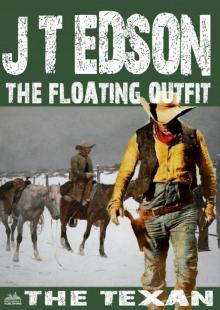 The Floating Outfit 46
The Floating Outfit 46 Dusty Fog's Civil War 11
Dusty Fog's Civil War 11 The Floating Outfit 61
The Floating Outfit 61 The Owlhoot
The Owlhoot Alvin Fog, Texas Ranger
Alvin Fog, Texas Ranger The Floating Outfit 34: To Arms! To Arms! In Dixie! (A Floating Outfit Western)
The Floating Outfit 34: To Arms! To Arms! In Dixie! (A Floating Outfit Western) The Floating Outfit 44
The Floating Outfit 44 Dusty Fog's Civil War 10
Dusty Fog's Civil War 10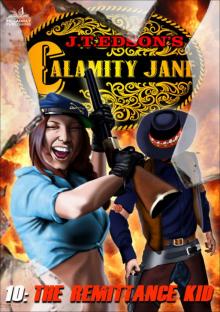 Calamity Jane 10
Calamity Jane 10 Cap Fog 4
Cap Fog 4 The Floating Outfit 51
The Floating Outfit 51 The Floating Outfit 50
The Floating Outfit 50 The Floating Outfit 49
The Floating Outfit 49 The Floating Outfit 10
The Floating Outfit 10 Apache Rampage
Apache Rampage The Floating Outfit 15
The Floating Outfit 15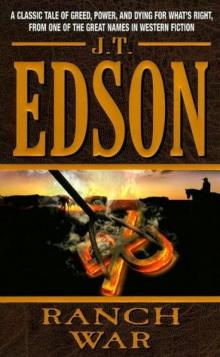 Ranch War
Ranch War The Floating Outfit 11
The Floating Outfit 11 The Devil Gun
The Devil Gun Sacrifice for the Quagga God (A Bunduki Jungle Adventure Book 3)
Sacrifice for the Quagga God (A Bunduki Jungle Adventure Book 3) Comanche (A J.T. Edson Western Book 1)
Comanche (A J.T. Edson Western Book 1) The Floating Outfit 48
The Floating Outfit 48 Wacos Debt
Wacos Debt The Rebel Spy
The Rebel Spy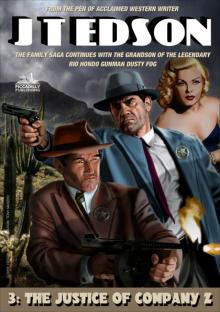 Cap Fog 3
Cap Fog 3 Trouble Trail
Trouble Trail Cold Deck, Hot Lead
Cold Deck, Hot Lead Rockabye County 4
Rockabye County 4 The Bullwhip Breed
The Bullwhip Breed Set Texas Back On Her Feet (A Floating Outfit Western Book 6)
Set Texas Back On Her Feet (A Floating Outfit Western Book 6)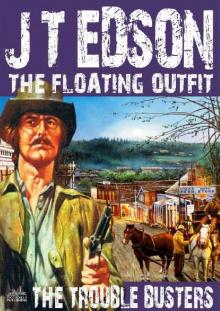 The Floating Outfit 25: The Trouble Busters (A Floating Outfit Western)
The Floating Outfit 25: The Trouble Busters (A Floating Outfit Western) Fearless Master of the Jungle (A Bunduki Jungle Adventure
Fearless Master of the Jungle (A Bunduki Jungle Adventure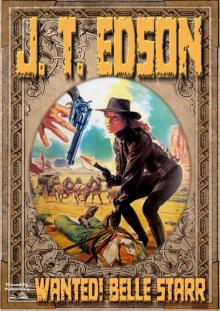 Wanted! Belle Starr!
Wanted! Belle Starr! The Big Hunt
The Big Hunt Running Irons
Running Irons The Floating Outfit 19
The Floating Outfit 19 You're in Command Now, Mr Fog
You're in Command Now, Mr Fog The Floating Outfit 27
The Floating Outfit 27 Texas Killers
Texas Killers Ole Devil and the Mule Train (An Ole Devil Western Book 3)
Ole Devil and the Mule Train (An Ole Devil Western Book 3) Bunduki and Dawn (A Bunduki Jungle Adventure Book 2)
Bunduki and Dawn (A Bunduki Jungle Adventure Book 2) The Fortune Hunters
The Fortune Hunters The Floating Outfit 12
The Floating Outfit 12 The Hide and Tallow Men (A Floating Outfit Western. Book 7)
The Hide and Tallow Men (A Floating Outfit Western. Book 7) Young Ole Devil
Young Ole Devil Slip Gun
Slip Gun The Drifter
The Drifter The Floating Outfit 45
The Floating Outfit 45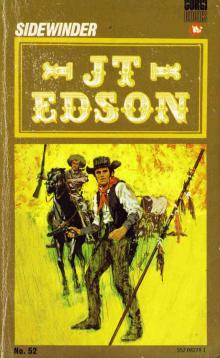 Sidewinder
Sidewinder The Ysabel Kid
The Ysabel Kid Waco 6
Waco 6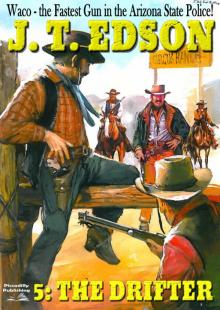 Waco 5
Waco 5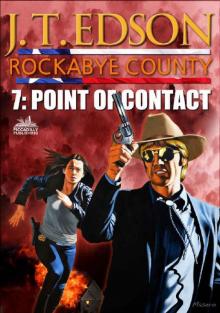 Point of Contact
Point of Contact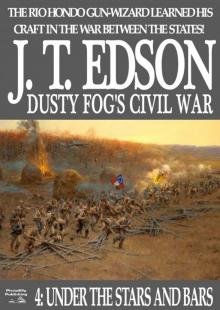 Under the Stars and Bars (A Dusty Fog Civil War Western Book 4)
Under the Stars and Bars (A Dusty Fog Civil War Western Book 4) The Floating Outfit 9
The Floating Outfit 9 Under the Stars and Bars
Under the Stars and Bars .44 Caliber Man
.44 Caliber Man The Floating Outfit 17
The Floating Outfit 17 Ole Devil at San Jacinto (Old Devil Hardin Western Book 4)
Ole Devil at San Jacinto (Old Devil Hardin Western Book 4) The Bloody Border
The Bloody Border A Horse Called Mogollon (Floating Outfit Book 3)
A Horse Called Mogollon (Floating Outfit Book 3) Waco 3
Waco 3 The Texan
The Texan The Floating Outfit 35
The Floating Outfit 35 Mississippi Raider
Mississippi Raider The Big Gun (Dusty Fog's Civil War Book 3)
The Big Gun (Dusty Fog's Civil War Book 3) Goodnight's Dream (A Floating Outfit Western Book 4)
Goodnight's Dream (A Floating Outfit Western Book 4) Waco 4
Waco 4 From Hide and Horn (A Floating Outfit Book Number 5)
From Hide and Horn (A Floating Outfit Book Number 5) The Floating Outfit 18
The Floating Outfit 18 Slaughter's Way (A J.T. Edson Western)
Slaughter's Way (A J.T. Edson Western) Dusty Fog's Civil War 7
Dusty Fog's Civil War 7 Two Miles to the Border (A J.T. Edson Western)
Two Miles to the Border (A J.T. Edson Western)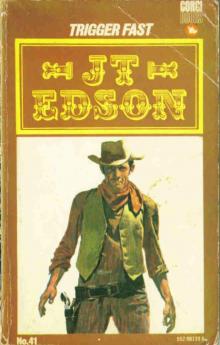 Trigger Fast
Trigger Fast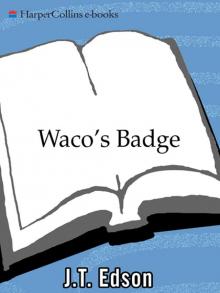 Waco's Badge
Waco's Badge A Matter of Honor (Dusty Fog Civil War Book 6)
A Matter of Honor (Dusty Fog Civil War Book 6) The Half Breed
The Half Breed Bunduki (Bunduki Series Book One)
Bunduki (Bunduki Series Book One) Kill Dusty Fog
Kill Dusty Fog Get Urrea! (An Ole Devil Hardin Western Book 5)
Get Urrea! (An Ole Devil Hardin Western Book 5) Dusty Fog's Civil War 9
Dusty Fog's Civil War 9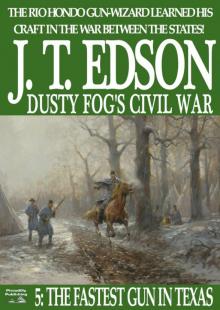 The Fastest Gun in Texas (A Dusty Fog Civil War Book 5)
The Fastest Gun in Texas (A Dusty Fog Civil War Book 5) Sagebrush Sleuth (A Waco Western #2)
Sagebrush Sleuth (A Waco Western #2) Quiet Town
Quiet Town Is-A-Man (A J.T. Edson Standalone Western)
Is-A-Man (A J.T. Edson Standalone Western) Rockabye County 5
Rockabye County 5 The Floating Outfit 14
The Floating Outfit 14 Cure the Texas Fever (A Waxahachie Smith Western--Book 3)
Cure the Texas Fever (A Waxahachie Smith Western--Book 3) The Floating Outfit 13
The Floating Outfit 13 The Road to Ratchet Creek
The Road to Ratchet Creek